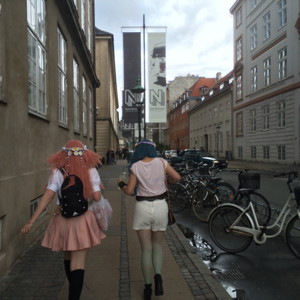
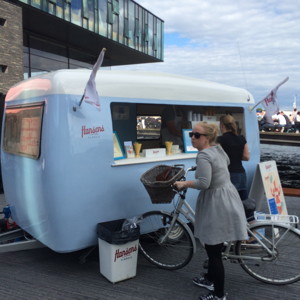
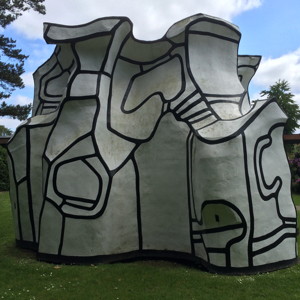
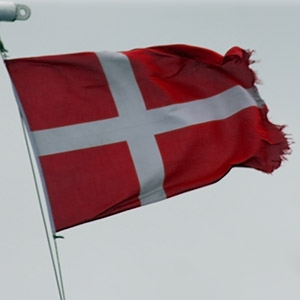
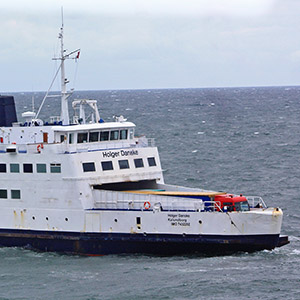
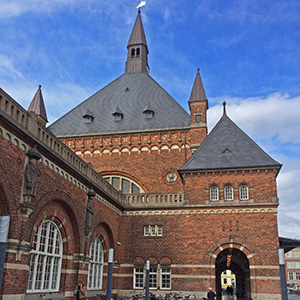
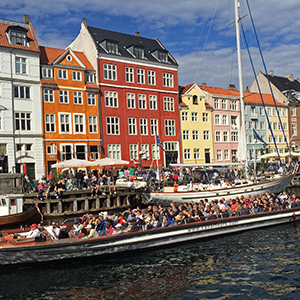
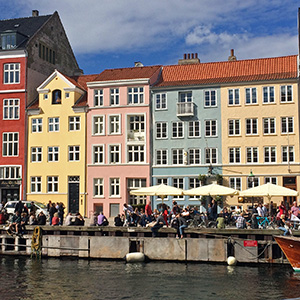
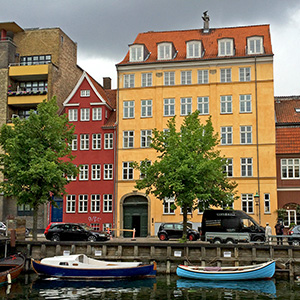
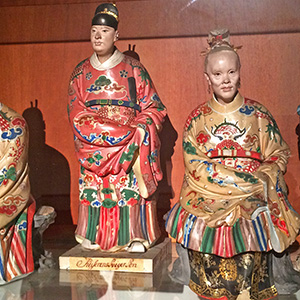
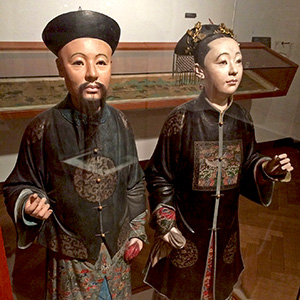
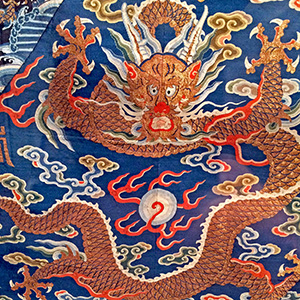
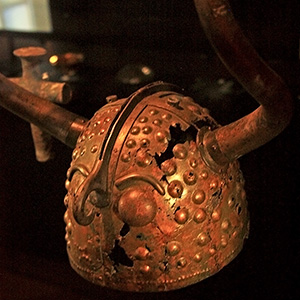
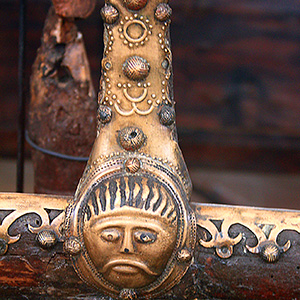
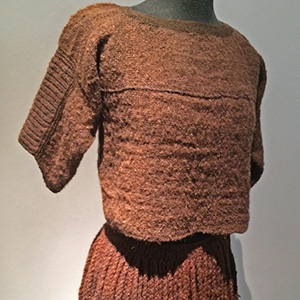
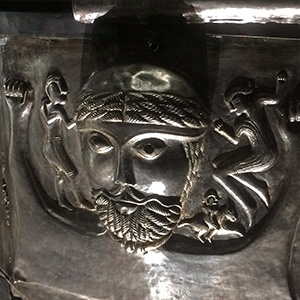
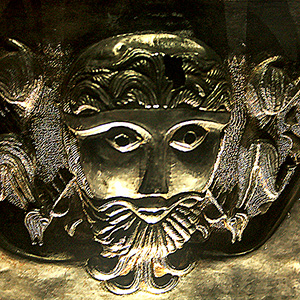
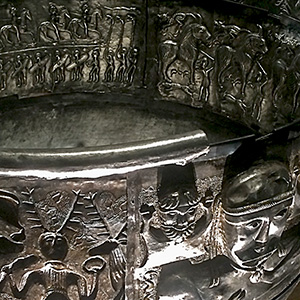
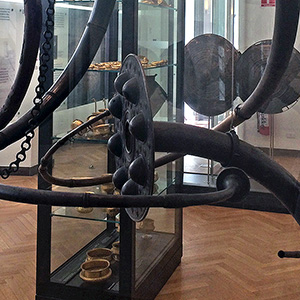
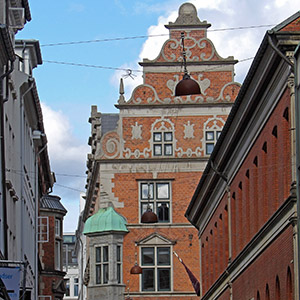
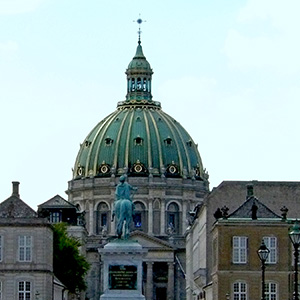
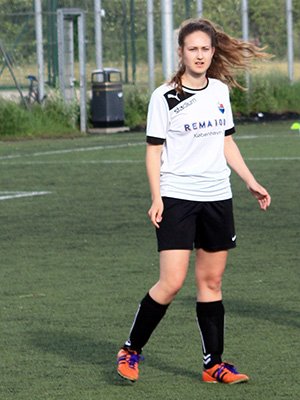
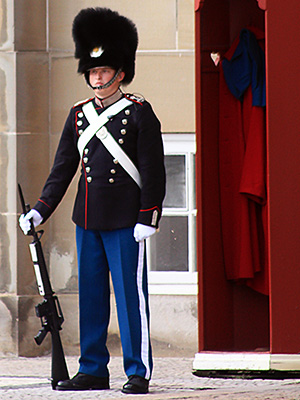
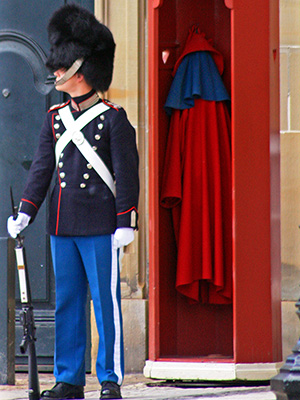
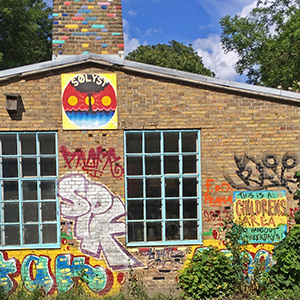
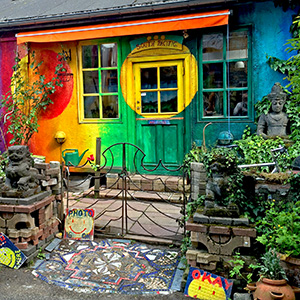
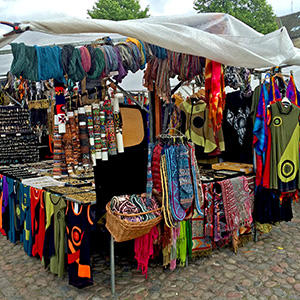
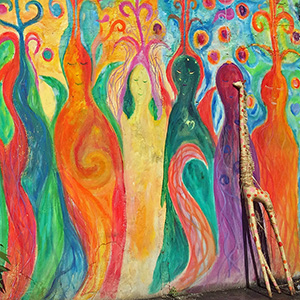
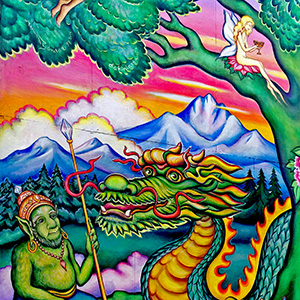
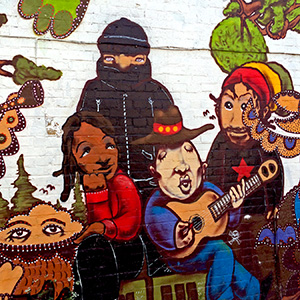
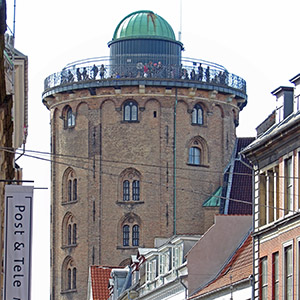
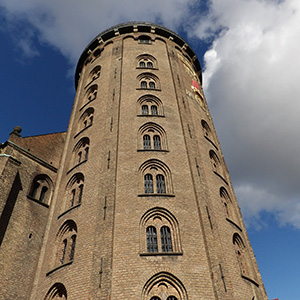
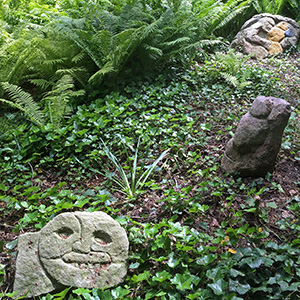
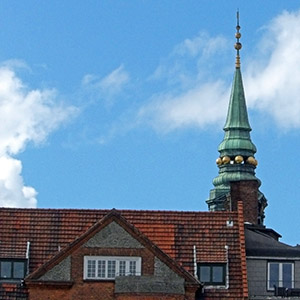
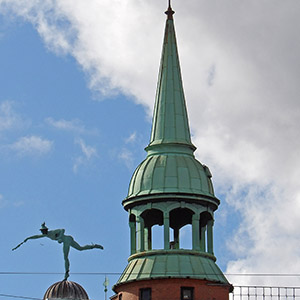
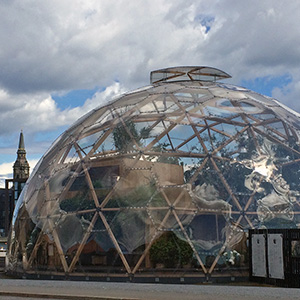
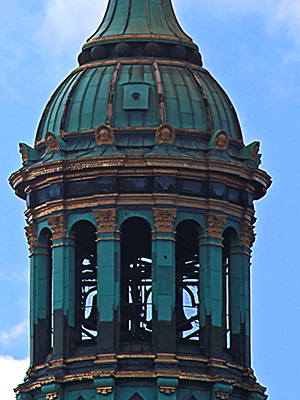
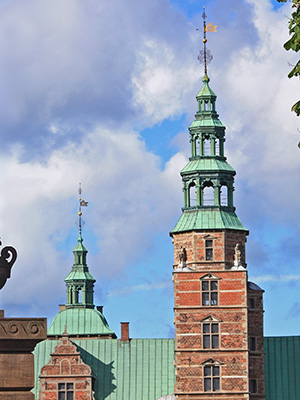
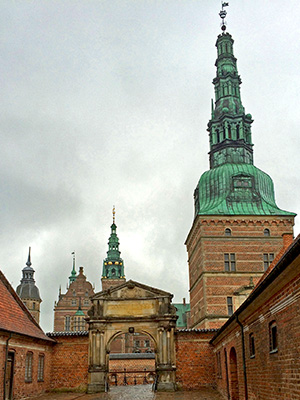
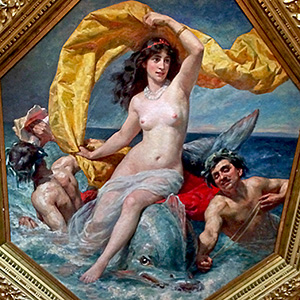
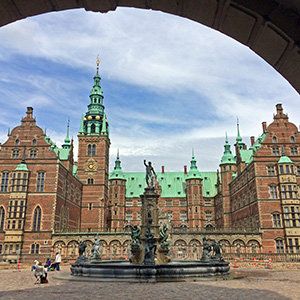
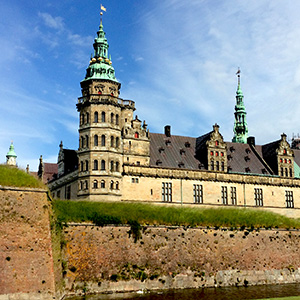
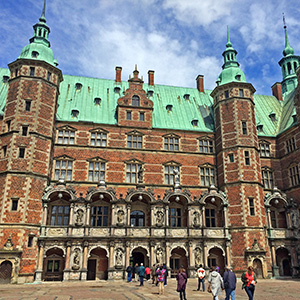
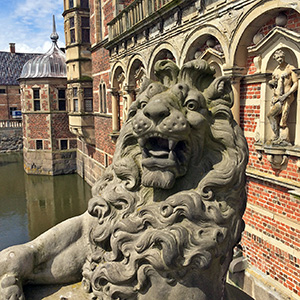
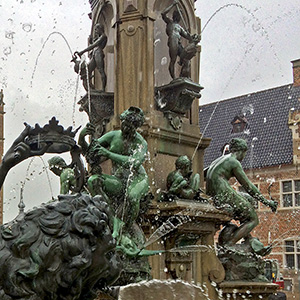
Hadley-Ives family photographs from 2015. Page 22. |
|
Page 22 features photographs from Denmark. |
 |
 |
 |
|
| Two girls walking down the street in Copenhagen, Denmark. | A street vendor in Copenhagen. | One of many sculptures in the Louisiana museum of modern art-Denmark | |
 |
 |
 |
|
| The flag of Denmark, perhaps the oldest national flag in the world, flies over the ferry boat bringing our train from Puttgarden, Germany to Rødby Havn, Denmark. | A Scandlines ferry crossing the Fehmarnbelt between Lolland (Danish island) and Fehmarn (German island). | The main train station in København. | |
 |
 |
 |
|
| Nyhavn in København, this is one of the sights every water tour will see, especially since some of the water tours of Copenhagen start in Nyhavn. | Nyhavn in København, the area was built up from 1650 and later, and was restored in the 20th century. | København has lovely waterfront areas. | |
 |
 |
 |
|
| København has the Danish National Museum (Nationalmuseet). It is free, and it is huge. We enjoyed the collection of ethnographic and world culture exhibits. | The Nationalmuseet has some family statue portraits made in the late Ch'ing (Qing) dynasty (late 19th century and early 20th century). | Having recently been living in Taiwan, we were interested in how Chinese culture was presented in the Danish museum. | |
 |
 |
 |
|
| Nationalmuseet: there is no evidence that Vikings ever wore horned helmets. However, some people in Denmark living about 1800 years before the times of the Vikings (in about 900 BC) did have these sorts of horned helmets, which were probably ceremonial. | Nationalmuseet: this is a close look at some of the decorative work on a wagon found in a western Jutland bog. It dates to a time probably in the century before the Common Era (maybe sometime between 40 and 100 BC). | This clothing is made with the materials, dyes, and weaving and sewing styles of the clothing found on girls and women whose bodies have been recovered from Danish bogs. This is what some women of Denmark wore about three thousand years ago. | |
 |
 |
 |
|
| Nationalmuseet: The Gundestrup Cauldron, which seems to have been created by craftspersons and artists in what is now northwestern Bulgaria. | Nationalmuseet:The silver Gundestrup Cauldron is over 2,000 years old; it was made between 1 and 150 BC. | Nationalmuseet:The Gundestrup Cauldron has scenes of gods and goddesses, animals, warriors, and so forth. There are even a few horn blowers. | |
 |
 |
 |
|
| Nationalmuseet: The museum has an impressive collection of bronze instruments from 700 BC to 1200 BC. These horns are called Lurer (Lurs). These could possibly be the Brudevælte lurs (made around 750 BC). You can find some videos online with the sounds of such instruments. | Copenhagen was, in very ancient times, mostly built up with wooden structures, and those burned down. In the 17th century more structures were built with stone or brick, and so most of the oldest buildings in Copenhagen date to the 17th century. | The view of the Frederik’s Kirken (Marble Church) from Amalienborg, the royal residence for the Danish monarch. Architects Nicolai Eigtved (1701-1754) and Nicolas-Henri Jardin (1720-1799) and Ferdinand Meldahl (1827-1908) worked on the design for this church, which wasn’t finished until 1894. | |
 |
 |
 |
|
| Danish people enjoy soccer. Our friend, Julie, and her sister, Marie, both play soccer. We went to watch Julie play a game with her team on Friday evening, our first day in Denmark. | Here is a royal guard in Amalienborg. | Another member of the royal guard in Amalienborg. | |
 |
 |
 |
|
| Christiania is an intential community in Copenhagen. In 1971, when the Danish government closed a military base in the center of Denmark, some counter-cultural pacifists and anarchists (hippies) occupied the base before it could be privitized or redeveloped, and ever since that year, this community of Christiania has been an ongoing experiment in alternative society. | In Christiania you are supposedly not in a capitalism-occupied zone; you are instead in a "free city" of Christiania, where authentic anarchist democracy organizes society, rather than capitalism. At least, that is the goal. | Christiania does have restaurants and markets, and the people who live in Christinia do make things for export to the world outside this free zone. Some of the things that people sell in Christiania are illegal outside in the rest of Denmark, and therefore, there are areas of Christiania where no photography is allowed. | |
 |
 |
 |
|
| Christiania displays the aesthetic of Danish anarchists and pacifists, with many murals and artworks that display the tastes of the Scandinavian counter-culture. | This mural in Christiania has a Chinese dragon and western faeries in the same scene. | Music and art seem important in Christiania. Everywhere one looks you can see plants, art, or decorations. | |
 |
 |
 |
|
| The Rundetårn in Copenhagen; this tower was built in 1642, and remains a beloved landmark and symbol of Copenhagen. | I went up the ramp to the top of the Rundetårn in 1985 and 2003, but during this 2015 visit I declined to go up. | Cute stones in a fern garden area of the Louisiana art museum. | |
 |
 |
 |
|
| The steeple of Sankt Petri (Saint Peter) Church in Copenhagen. | The tower on the building at the corner of Klareboderne and Købmagergade in København. | This was a temporary geodesic dome near the Højbro Plads in Copenhagen. | |
 |
 |
 |
|
| The cupola on the top of the dome of Frederiks Kirken. | The Rosenborg palace in Copenhagen, built between 1606-1633, is a museum with the crown jewels and other treasures. | The Frederiksborg Palace in Hillerød, most recently rebuilt in the 1860s (it was originally completed in 1621 and remodeled and modernized in 1740). | |
 |
 |
 |
|
| A painting in Frederiksborg Slot. | Frederksborg Slot. | The Kronborg Slot in Helsingør, originally rebuilt in 1420, then renovated and improved in 1585, and rebuilt in the 1630s. The play Hamlet is set in this palace. | |
 |
 |
 |
|
| A painting in Frederiksborg Slot. | Frederksborg Slot. | The Kronborg Slot in Helsingør, originally rebuilt in 1420, then renovated and improved in 1585, and rebuilt in the 1630s. The play Hamlet is set in this palace. |
Other web pages with our pictures:
2015 collection of images from Europe
Thematic Pages
Sources and diversions.
 This work by Eric & Chun-Chih Hadley-Ives is licensed under a Creative Commons Attribution-NonCommercial-ShareAlike 4.0 International License. |